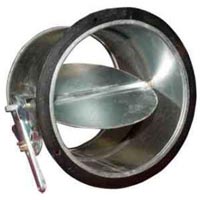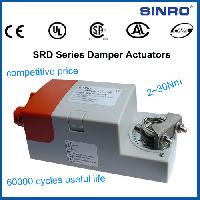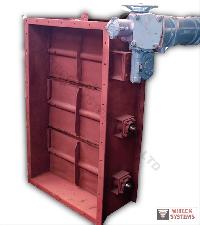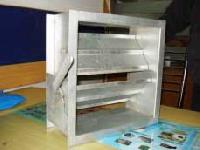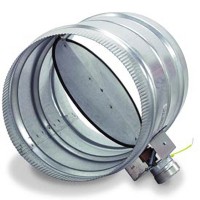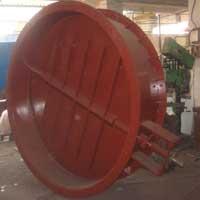
Listing ID #3939023
Company Information
Ask for more detail from the seller
Contact SupplierMulti Louver Damper
The louver type of damper consists of several blades mounted parallel across a duct, with centrally pivoted shafts extending out through a frame and driven by a linkage. Louver dampers are versatile, able in theory to handle any application in the power plant.
Some of their advantages:
Louver dampers have basic disadvantages, however. Here's a partial list:
The drive for a louver are simple, needing only 90° of motion. The torque requirement can vary widely over damper life, if corrosion and thermal effects are severe. Electric motors, air cylinders, and oil cylinders are able to actuate louver dampers with little difficulty.
Louver dampers are best applied to balance or control flow. The normal leak path of 0.7% of duct area produces a three to five percent leak rate in average applications.
As a general rule, a damper should be used in the middle third of the control range for best results. This gives equal percentage in either direction should the need arise.
A variety of options are available. Metallic spring seals, sealed (dust tight) blade ends, shear seals, and many materials are available.
Leakage performance of a louver depends on ratio of flowing to shutoff pressure, design temperature, number of blades, and blade edge treatment. Since the first two are system related, the last two are the usual areas of improvement. Reduction of number of blades reduces leak path to the limit that a single blade has only perimeter leakage.


